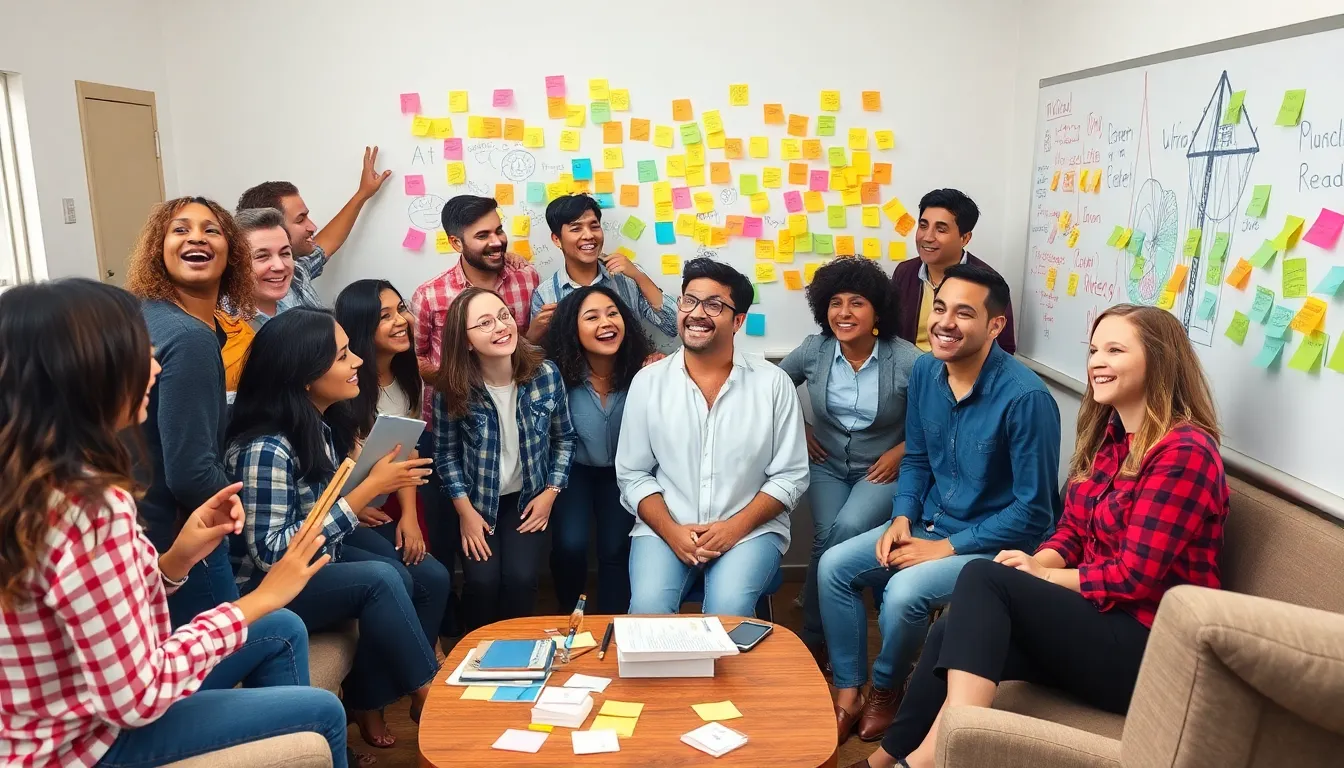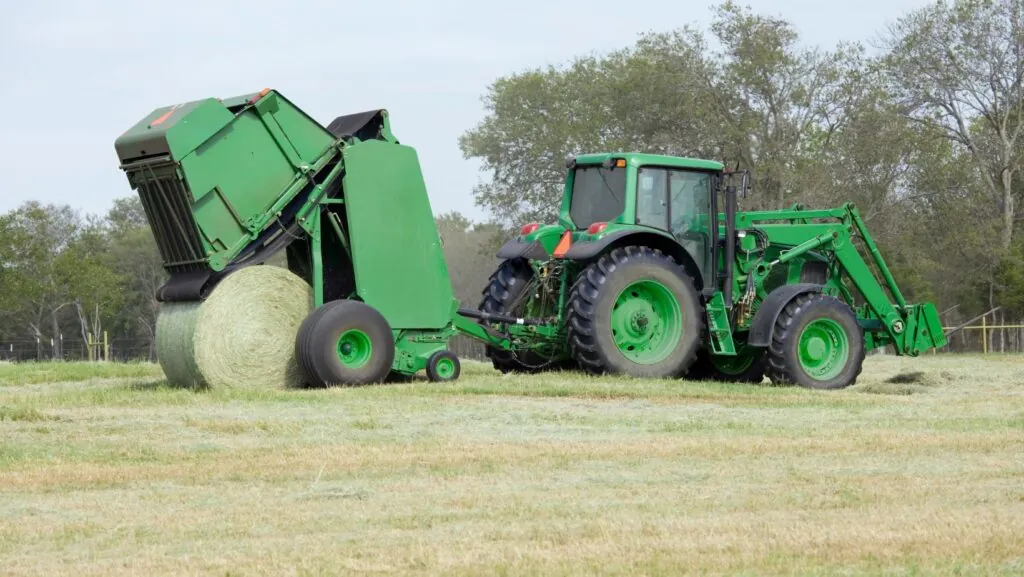Table of Contents
ToggleIn a world where ideas are currency, quickfire idea sprints are the gold rush everyone’s talking about. Picture this: a room buzzing with energy, minds racing faster than a caffeinated squirrel, and creativity flowing like a river after a rainstorm. These short, intense brainstorming sessions are designed to unleash a torrent of fresh ideas in record time, leaving traditional meetings in the dust.
Understanding Quickfire Idea Sprints
Quickfire idea sprints represent a powerful approach to brainstorming. These sessions emphasize generating a multitude of creative ideas quickly, significantly diverging from typical meeting formats.
Definition and Concept
Quickfire idea sprints involve focused, time-constrained brainstorming sessions. Participants collaborate intensively over a short period, often ranging from 30 minutes to two hours. Teams generate dozens of ideas in a stimulating environment, prioritizing creativity over critical analysis during the initial phase. Ideas flow freely, with no room for judgment or lengthy discussion. This method fosters an energetic atmosphere, driving participants to explore unconventional solutions. Quickfire sprints rely on agile methodologies, emphasizing speed and flexibility in the creative process.
Benefits of Quickfire Idea Sprints
Quickfire idea sprints stimulate creativity, encouraging teams to think outside the box. High engagement levels occur as participants share their thoughts without restraint. Another advantage lies in the efficient use of time; teams can produce numerous ideas within a limited timeframe. Quick feedback loops emerge, allowing for immediate refinement and development of concepts during the session. Additionally, diverse perspectives contribute to a richer idea pool, enhancing innovation. Simplified collaboration fosters stronger team dynamics, uniting members through shared creativity and purpose.
How Quickfire Idea Sprints Work

Quickfire idea sprints accelerate the brainstorming process. They involve structured activities that maximize creativity and engagement.
The Sprint Process
The sprint process begins with defining a clear goal. Participants then gather, brimming with enthusiasm, in a time-constrained setting. Each session lasts between 30 minutes and two hours. Ideas flow rapidly, as critical analysis is set aside for creativity. Facilitators guide discussions, ensuring everyone contributes. After generating numerous ideas, teams prioritize the most promising options. Feedback loops occur throughout the session, allowing for immediate refinement. This dynamic atmosphere fosters a sense of urgency and excitement, pushing participants to think outside the box.
Key Components for Success
Successful sprints feature several key components. An energetic environment cultivates engagement and creativity. Diverse participant backgrounds lead to a broader range of ideas. Clear objectives steer discussions and provide focus. Tools like brainstorming templates or digital platforms enhance collaboration. Time management is crucial; strict adherence to schedules keeps energy high. Regular breaks facilitate sustained creativity and prevent burnout. Facilitators play a vital role, ensuring balance in discussions and maintaining momentum throughout the session.
Implementing Quickfire Idea Sprints in Your Team
Building a dynamic and engaging atmosphere is essential for successful quickfire idea sprints. A conducive environment fosters creativity and encourages collaboration among team members.
Setting Up the Sprint Environment
Create a space that promotes energy and participation. A well-lit room with comfortable seating can stimulate discussion and idea generation. Utilize whiteboards, sticky notes, and digital tools for visual collaboration. Offering refreshments adds to a relaxed atmosphere. Ensure minimal distractions by turning off notifications and keeping the area free of clutter. This setup helps maintain focus and encourages spontaneous creative thinking.
Roles and Responsibilities
Establish clear roles to maximize efficiency during sprints. Assign a facilitator to guide discussions and keep the momentum. Encourage participation by inviting diverse voices and perspectives. Designate timekeepers to ensure strict adherence to schedules. Allow for note-takers to document ideas and feedback for future refinement. Each team member contributes uniquely, promoting a sense of ownership and innovation throughout the process. Prioritizing these roles enhances the sprint’s effectiveness, ensuring that every participant engages meaningfully.
Challenges and Solutions
Quickfire idea sprints encounter several challenges that can hinder their effectiveness. Understanding these obstacles helps participants improve their approach and achieve better outcomes.
Common Obstacles
Time constraints often limit thorough discussion. Participants may rush through ideas, sacrificing depth for quantity. Lack of clear objectives can confuse the team, leading to unfocused brainstorming sessions. Homogeneous backgrounds among team members restrict diverse perspectives, stifling creativity. Additionally, anxiety may surface in competitive environments, causing some individuals to hold back contributions. Technical difficulties with collaboration tools can also disrupt the flow of ideas, preventing smooth communication.
Strategies to Overcome Challenges
Establish clear objectives before the sprint starts. Focus on what the team aims to achieve during the session. Encourage team members to share diverse viewpoints by inviting participants from different backgrounds. Set a relaxed atmosphere that promotes open dialogue, allowing all voices to feel heard. Utilize effective collaboration tools and conduct pre-session tests to troubleshoot potential issues. Assign roles within the team to streamline the process and enhance engagement, keeping everyone focused and accountable.
Quickfire idea sprints represent a powerful tool for teams seeking to ignite creativity and drive innovation. By fostering an energetic environment and encouraging diverse perspectives, these sessions can transform the brainstorming process into a dynamic experience. With clear objectives and effective facilitation, teams can maximize their potential and generate a wealth of ideas in a short timeframe.
Addressing potential challenges ensures that quickfire idea sprints remain productive and engaging. As organizations embrace this approach, they unlock new possibilities for collaboration and creativity, ultimately enhancing team dynamics and driving successful outcomes. Embracing quickfire idea sprints could be the key to staying ahead in today’s fast-paced landscape.




